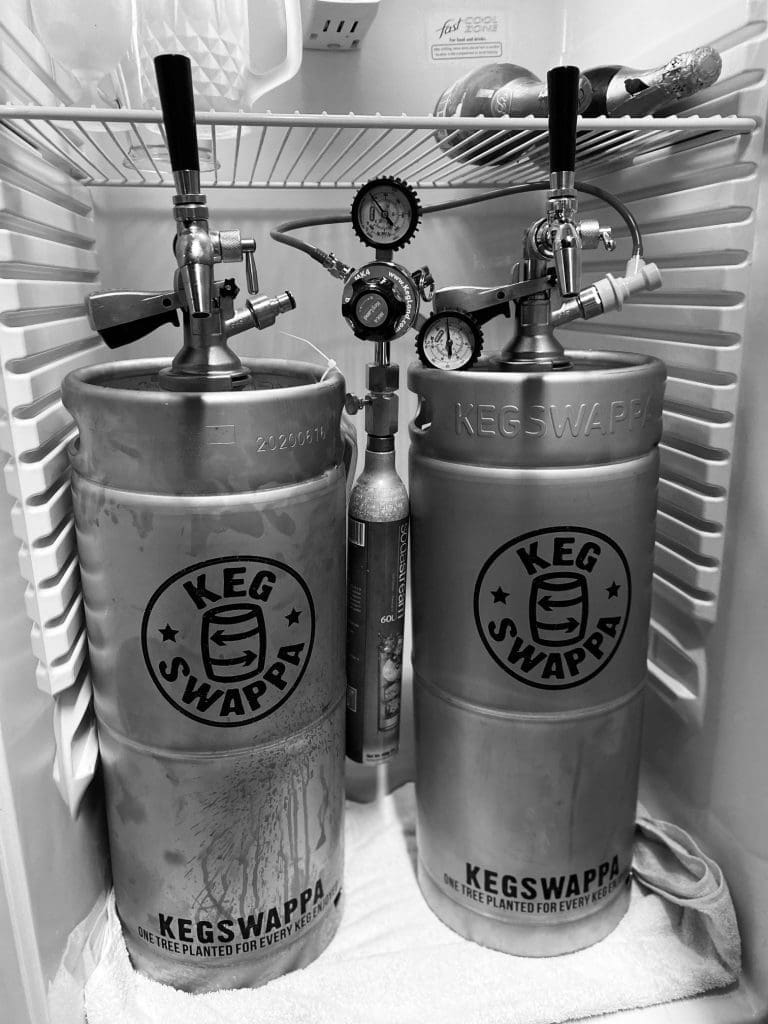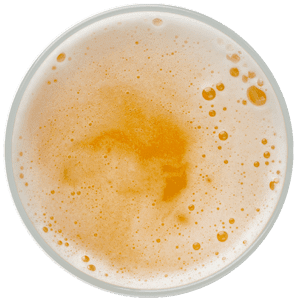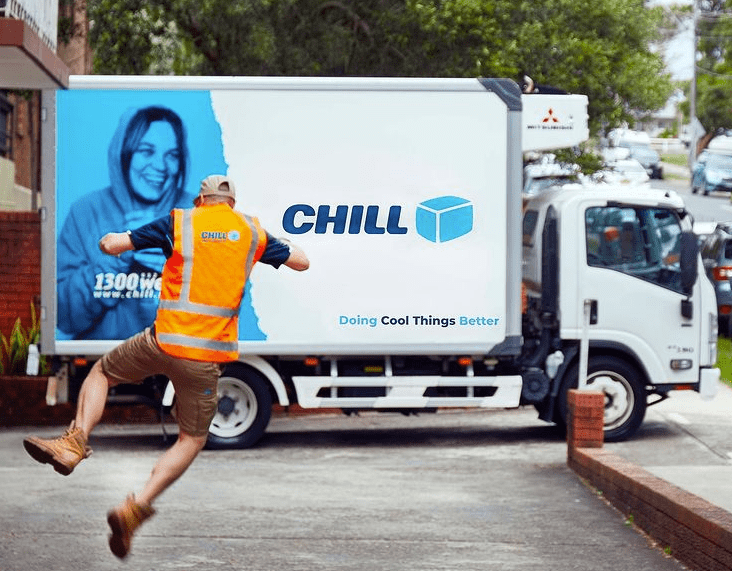SWAPPA HELP
WHAT IS A KEG DEPOSIT?
Our 100% refundable Keg Deposit is required as a one off per keg. Use this keg to continue swapping, or simply return to one our Breweries to have your deposit returned.
Yes, if you’re getting 3 kegs, you’ll need to pay a deposit for each keg. Similarly, for 2 kegs, you’ll need 2 deposits, and so on.
The deposit is a one-time per keg payment; afterward, you only pay for refills. This way, you’re only paying for the brew itself, without any packaging costs, which saves you money and helps the planet. We encourage keg circulation, so if you decide not to continue swapping, simply return the keg, and we’ll refund you promptly.
About the kegs – they are all A-type kegs, commercial grade and although the warranty is only 30 years they can last hundreds of years.

top tips

Keep brews chilled, ideally 2-4 degrees
- keeps it fresh & avoids foam ups

Clean gear (lines, couplers etc) before tapping
- dirty gear = crappy brews

Clean glasses really, really do matter
- cleaning tips below

10 PSI works for most brews
- check the table below

DELIVERY FAQ's
For orders placed by midnight Sunday we deliver to all locations on a Wednesday except, the Blue Mountains on Thursdays and the Gong and Canberra on Fridays.
Sunday for the next drop. Can order weeks in advance.
It’s like the milk man of old where kegs are transported in refrigerated trucks/vans, you just leave out your empties and we will replace them for full kegs. We will send an SMS reminder the evening before delivery so you know to leave out empties.
Our drivers will knock on your door but if you are not around we will leave at your front door. That said, please add delivery instructions when checking out if you’d like kegs left elsewhere.
Please let us know, we will do our best to expand our delivery zone. Hit us up via email contact or open up a chat, we just need your delivery address.
More help
Getting Started
20L Kegs are 57cms tall, 24cms wide. With a coupler, 69cms tall, with a coupler & tap 78cms.
10L Kegs are 37cms tall, 24cms wide. With a coupler 49cms tall, with a coupler and tap 58cms.
If possible, allow a bit of extra headroom for wiggling the kegs in and pouring if using a tap.
The first keg is picked up when you collect your first brew (so you don’t need an empty to exchange with) or delivered to your door.
Please check out our gear page but at the very least, a keg, a coupler, a regulator, gas (or party pump) and a tap. You will also need the connectors, a beer line and a cleaning solution.
Please check the videos below for instructions on how to get pouring with the Simple Set Up, how to make a Kegerator and how to set up a Kegerator.
If everything is super cold and you haven’t been bouncing down a 4WD track, you can normally just tap and enjoy. If you are getting foamy pours it’s normally due to warm beer/gear but if it’s really shaken up, disconnect the gas and let some gas out, i.e. lift up the handle of the coupler so it’s no longer tapped, then unscrew the gas post, once off then gently lower the handle and you will hear the gas come out. When it starts to slow pull the handle back up, you don’t want zero gas. After that then try pouring with the flow control only just on.
If the beer is warm (ambient temp), allow 24hrs to chill.
Please check the table below but most beer can be run on 10-12 PSI. For the first pour drop the pressure down even lower, e.g. start at 5PSI until everything floods and is pouring well then dial it up.
The fastest way to turn yourself off your draft beer is to forego line cleaning. All sorts of horrible things can collect or grow in lines, e.g. bacteria, mould, bad yeast and sediment (beer/calcium stone). The result of not cleaning can be as simple as excess foam but can result in terrible tainted beer so please, please, please clean before kegging any new brew.
Please see the line cleaning video below. In short though please use the Stellarclean solution as per the directions by putting into a bottle, attaching the red carbonation cap, putting a bit of pressure into the bottle and then connect your tap to flush it out.
The golden temperature bracket is between 3 and 4 degrees. Of course beer can be too hot but it can also be too cold, e.g. taste flat because more carbonation stays in the beer.
Mastering
The golden temperature bracket is between 2 and 4 degrees, however, if you want to get really crafty read Blackhops’s guide below.
https://www.kegland.com.au/blog/post/how-to-fix-an-overcarbonated-beer
Party pumps & jockey/magic boxes are great but arguably the easiest approach is to just put the keg, coupler and tap in an esky. When you are ready to pour just stand up the keg, tap and enjoy.
Either way, the important point is to keep your keg, and everything that touches beer, super cold to avoid foamy pours.
General Info
Beer from a keg/tap instead of a bottle/can – like what you get at the pub. Draught beer is usually the freshest way to get beer unless you are positioned underneath a brite (storage) tank. If wondering, Draft and Draught are the same thing, just different spelling approaches (Draft is US).
Apologies but sadly not.
20L commercial kegs with an A-Type connector.
The empty keg weigh 5kg, full about 25kgs.
53 (375ml) beers.
If you can please collect within two weeks it would be greatly appreciated. Refrigeration space is normally scarse in a brewery so the quicker a keg is collected the better.
Yes of course, we offer delivery to your home or office, alternatively you can pick up the keg at a local brewery of your choice.
There is no golden ratio for how long beer will stay fresh but the rough guide is about 3 months after tapping although some tests suggest as long as 9 months for pasteurised beer but we hope it doesn’t come to that!
We don’t set the keg prices but the general view of the breweries is to charge a per beer price that is less than bottled or canned beer because kegged beer incurs less tax, removes packaging costs and takes less time to package. This could be a saving of up to 25%.
Yes, we understand that kegs offer around 40% less wastage due to the less packaging required (vs bottles/cans etc). To help tip the scales even further towards reusable kegs, we are also planting one tree for every keg enjoyed. If you’ve got any suggestions or thoughts on the matter we’d love to hear from you.
We want you to love the experience, if you are not and want out please let us know within 90 days, and we will refund you the cost of the keg – forewarning we may ask you for lots of feedback on what we could improve.
Temperature cycling doesn’t kill a beer per se, but exposure to warm temperatures. Beer should be treated like milk, if left out of the fridge it will go offer quicker. Refrigerated beer will keep its flavour as the brewer brewed it much longer, from months to weeks if left out. The beer won’t go bad in a way that makes you sick, the hop flavours and aromas will be diminished and delicious malt flavours may start to taste like cardboard. Simple rule, treat beer like milk.
On another note, if you drink bottles often, perhaps google light struck or skunked beer. If you don’t have time, just keep out of light because some beers go bad really fast when exposed to light.
Regulator Pressure
With great power comes great responsibility and carbonation levels can kill a brew.
You probably don’t need to know what a perfectly carbonated beer looks/tastes/smells like but just incase, if every pour is a frothy mess it’s likely the beer is over-carbonated. If the beer looks like a placid lake it is probably under-carbonated.
PALES
7-12 PSI
LAGERS
10-12 PSI
PILSNER
11-16 PSI
WHEAT
15-20 PSI
Videos
3. How to build a kegerator
4. How to balance gas in a keg
5. How to clean beer glasses
6. How to clean beer lines
(Very Important)
7. How to daisy chain
8. How to pour the perfect beer
